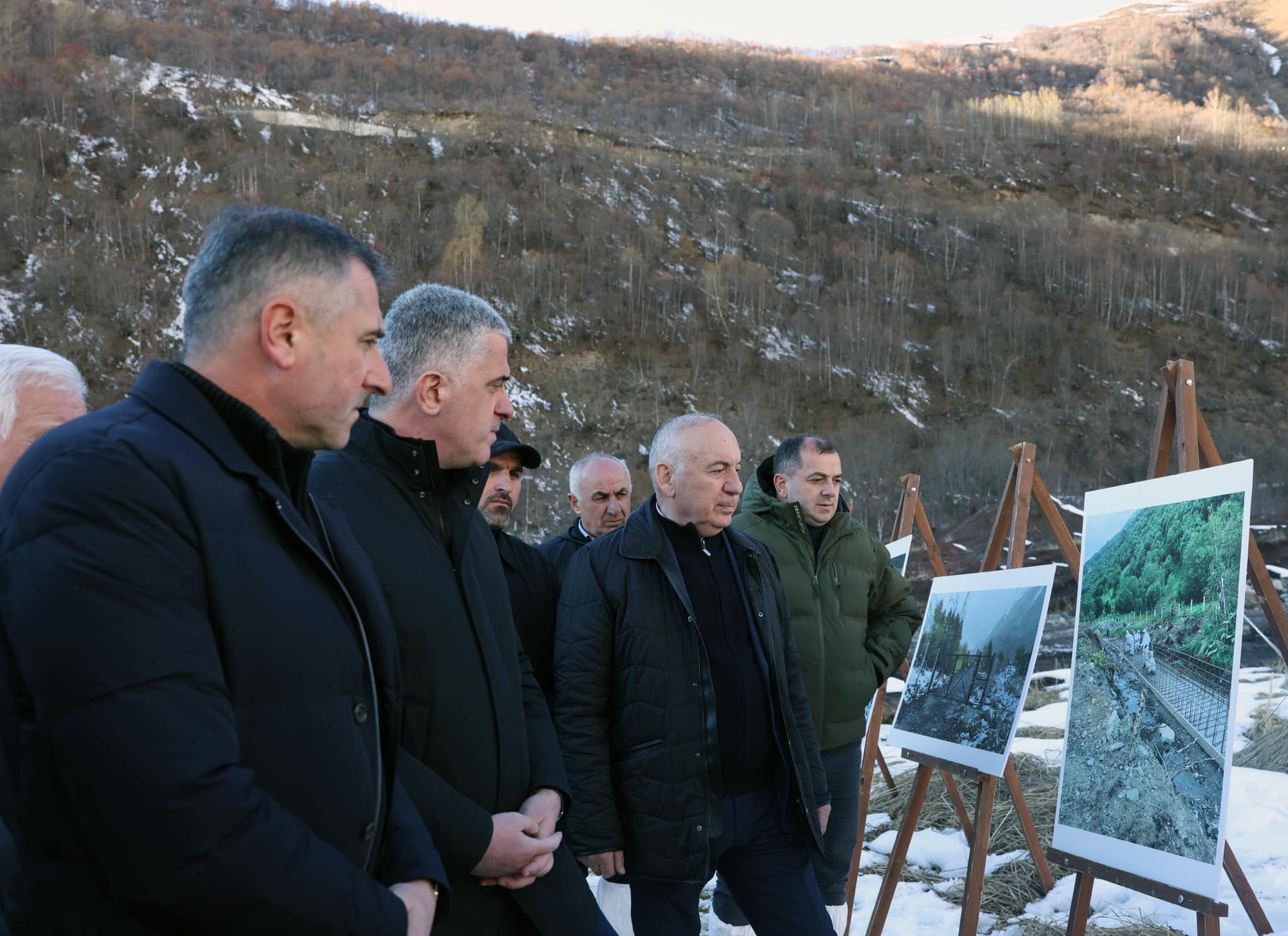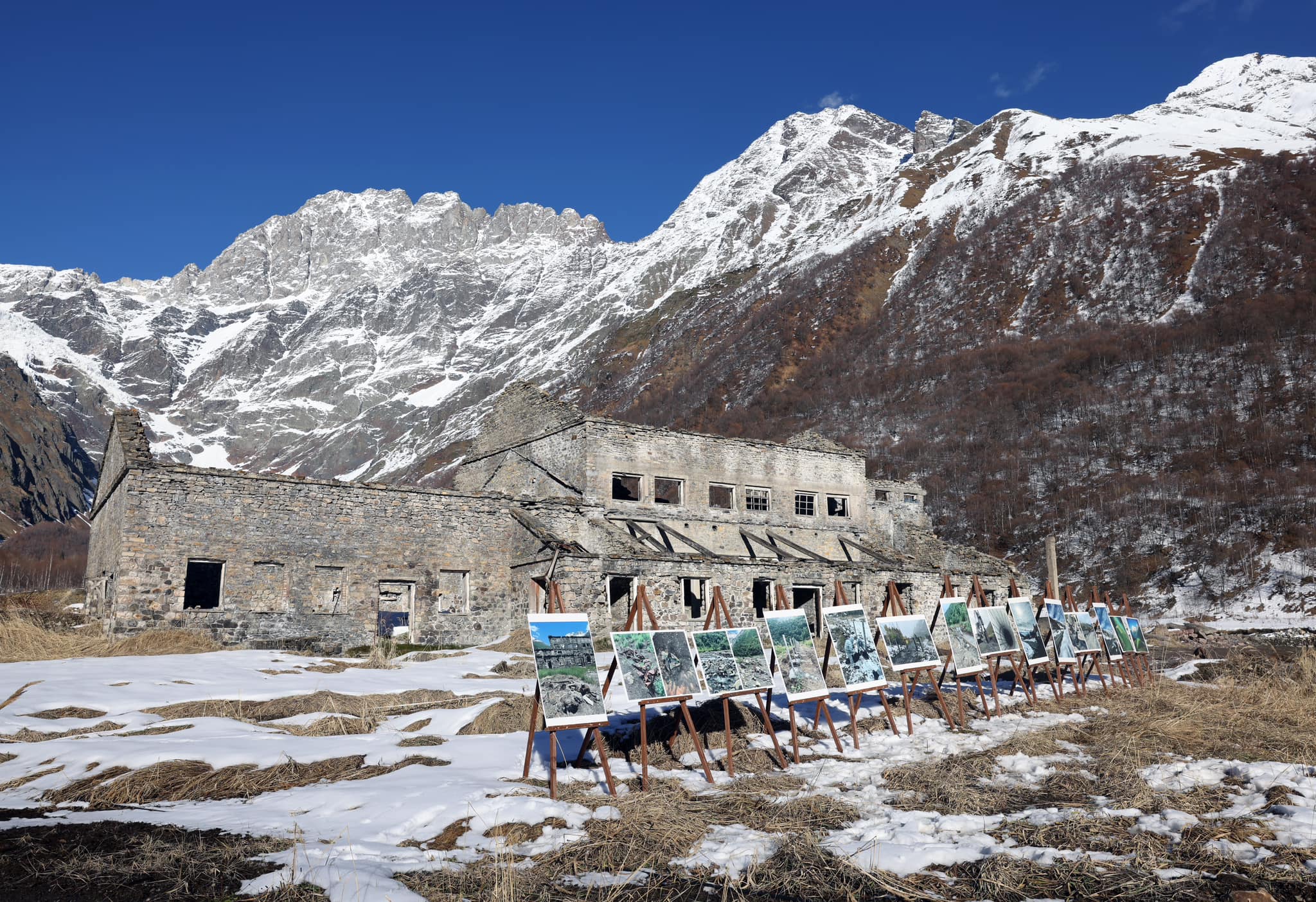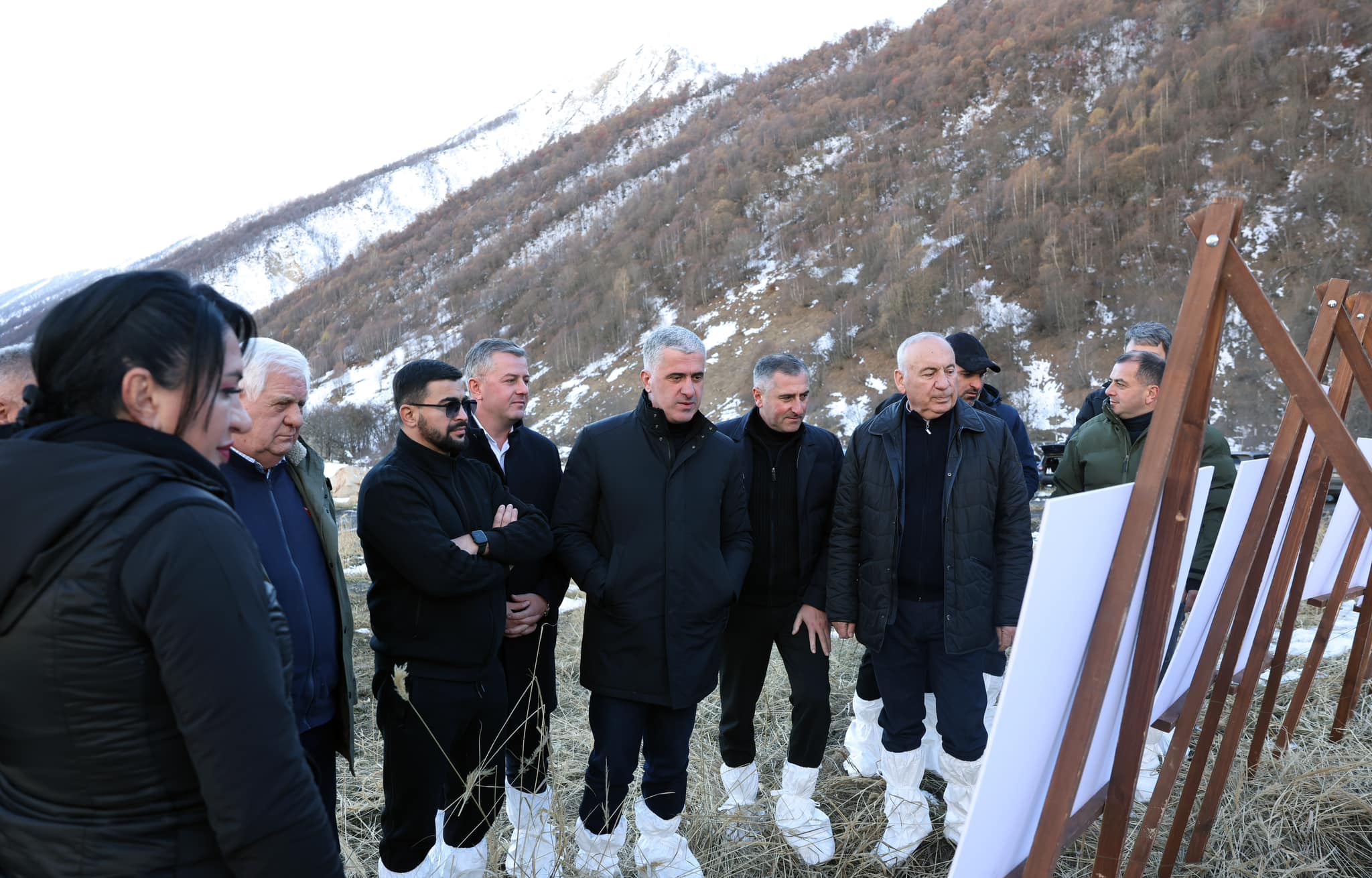News
Otar Shamugia: "A project of this scale for hazardous waste management is being implemented for the first time in the country, upon completion this area will be entirely safe."
The Minister of Environmental Protection and Agriculture, Mr. Otar Shamugia, and the State Representative of Racha-Lechkhumi and Kvemo Svaneti region, Mr. Papuna Margvelidze, learned about the ongoing activities to establish a secure storage facility for arsenic-containing waste in the village of Tsana, Lentekhi municipality.
"We are implementing an extremely significant initiative to fully remediate the sites polluted with arsenic-containing waste. The project includes three phases, with two already completed. The mentioned activities included extensive embankment work, sedimentation, and the construction of water-conducting channels, effectively isolating the contaminated area. We anticipate beginning the third phase in the spring of next year, which involves constructing a dedicated disposal facility for arsenic-containing waste. I would also emphasize that a project of this scale for hazardous waste management is being implemented for the first time in the country; once completed, the mentioned area will be fully organized and safe", said Mr Otar Shamugia.
Since the closure of mining and chemical facilities in the 1990s, arsenic waste has posed an ecological challenge in Tsana, leaving toxic waste exposed and uncontrolled.
According to Mr Papuna Margvelidze, the Government of Georgia is implementing an essential project for the region, which will fully solve the problem that has troubled the local community for decades.
Under the initiative of the Ministry of Environmental Protection and Agriculture, in coordination with the Government of Georgia and with the involvement of international and local experts, studies were conducted, and reports were prepared for setting up an arsenic-containing waste repository.
The mentioned process included several public discussions with experts and the population, aiming to identify priorities for ensuring security measures and planning initial protective measures to develop effective measures and further implement them.
As part of the project, contaminated areas in the villages of Dzugareshi (Tsana 1 site) and Koruldashi (Tsana 3 site) were fenced off to restrict access and protect people and animals from the dangerous sites.
Completed efforts include the construction of a 224-meter-long reinforced concrete embankment dam and a 350-meter-long water-carrying channel to prevent flooding and erosion around the waste containment area. Additionally, sedimentation control measures were implemented for the Koruldashi River to protect the sarcophagus site.
The final phase of the project, set for 2025, includes constructing a 50,500 m³ sarcophagus, which will collect and securely dispose of the arsenic waste.



